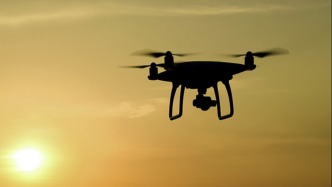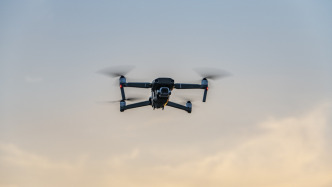
A novel carbon fiber structure supercapacitor developed by Professor Zhu Kongjun's team at Nanjing University of Aeronautics and Astronautics promises to allow drones to function as batteries within their fuselages, offering a new solution to the dilemma of balancing endurance and payload in drones. The research findings were recently published in *Advanced Materials*.
With the advancement of my country's "dual carbon" goals, drones have been widely used in airport patrols, urban delivery, and other fields. Current mainstream drones use aerospace-grade carbon fiber composite materials for their fuselages, which have only one-quarter the density of steel but seven times its strength, maximizing weight reduction. However, traditional battery systems have become a stumbling block to weight reduction.
Calculations show that for a logistics drone with a payload of 5 kg, the battery alone weighs 3 kg, and an additional 0.5 kg of counterweight is needed to maintain balance. Some companies have had to reduce their payload by 1 kg to allow their drones to fly an extra 5 km. This unavoidable trade-off has put many companies in a dilemma.
At an international conference, Zhu Kongjun came across the concept of "integrated structural energy storage" and had a flash of inspiration: "Could the fuselage structure itself store energy?" After that, he led his students to develop carbon fiber structure supercapacitors.
Under the guidance of Zhu Kongjun, Zhou Heng, a 2023 master's student at Nanjing University of Aeronautics and Astronautics, combined carbon fiber electrodes with epoxy resin-based solid electrolytes to try to create a "load-bearing energy storage device." After nearly a hundred experiments, he finally produced a qualified sample. "Reduced graphene oxide is like a 'current highway,' allowing electricity to be transferred quickly; vanadium oxide is like an 'energy warehouse,' capable of storing more electricity," said Zhu Kongjun. "A thin coating is expected to increase the energy storage capacity of carbon fiber by several times."
“Ordinary energy storage devices experience a decrease in stored capacity under pressure, but ours actually performs better,” Zhou Heng explained. He added that the material bonds more tightly under pressure, resulting in smoother electrical transmission. Even more remarkably, the material is also resistant to damage; it can still function after being slashed with a blade or drilled. Furthermore, they can be flexibly combined like building blocks to meet specific needs: connected in series for higher voltage and in parallel for greater capacity.
Related paper information: https://doi.org/10.1002/adma.202514323
(Original title: "New Supercapacitor from Nanjing University of Aeronautics and Astronautics May Enable Drones to Use 'Body as Battery'")


